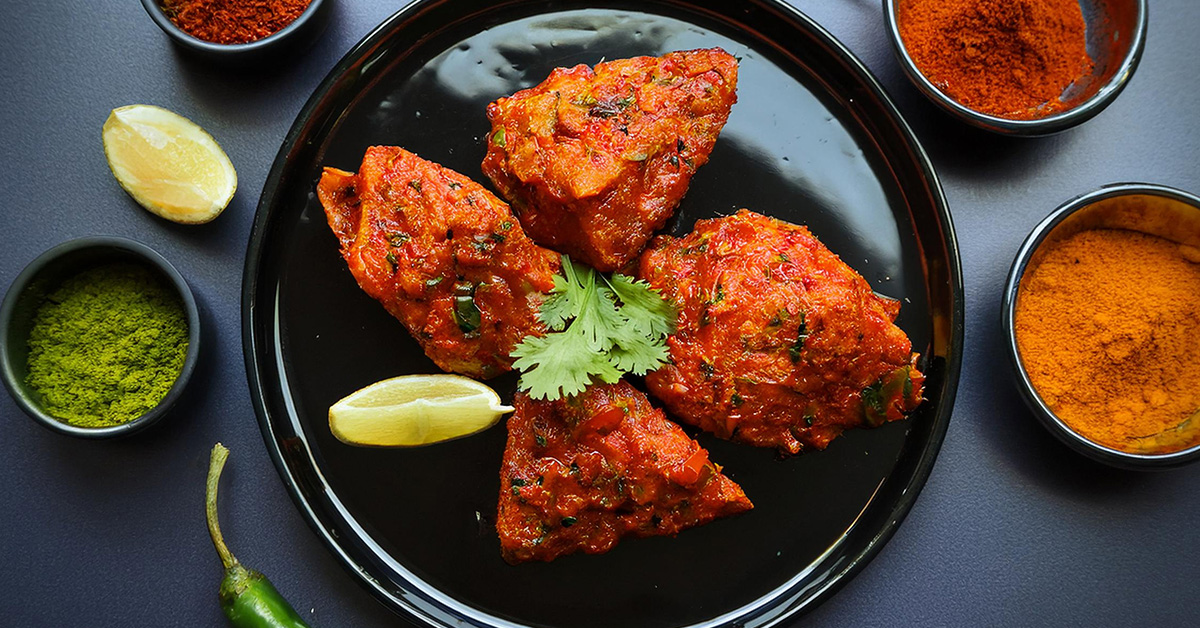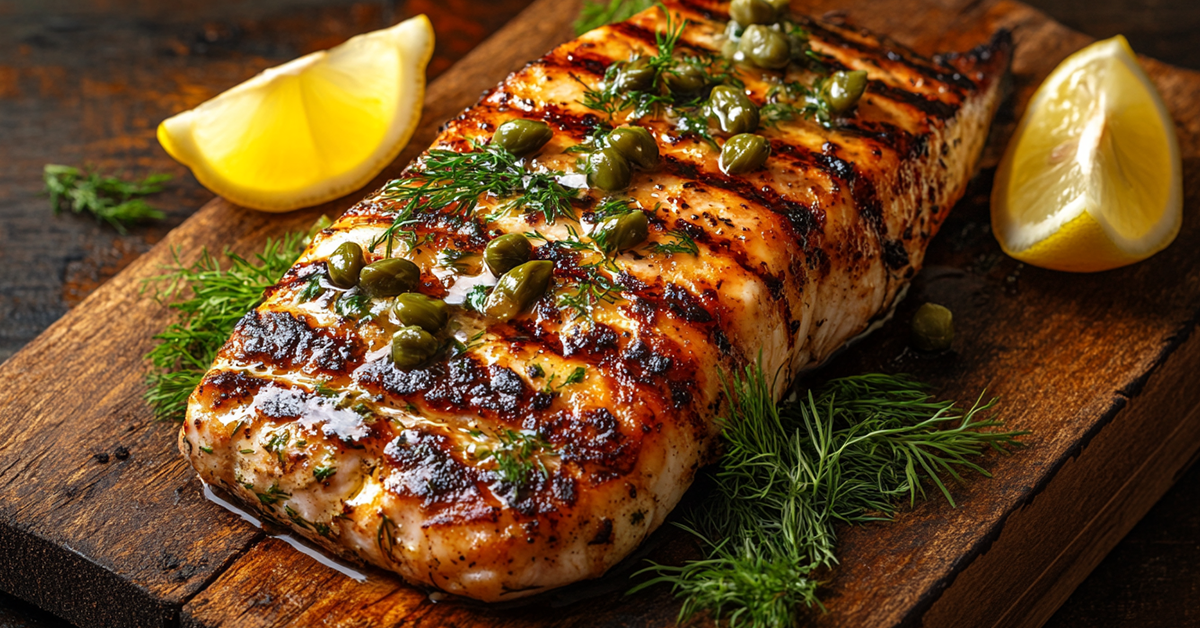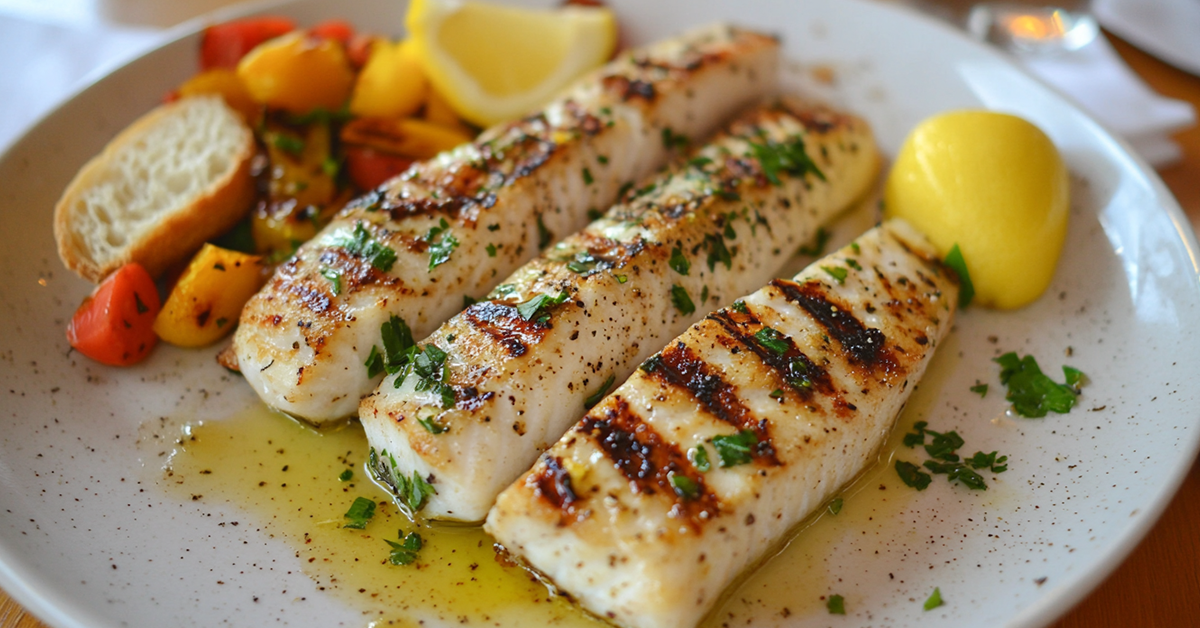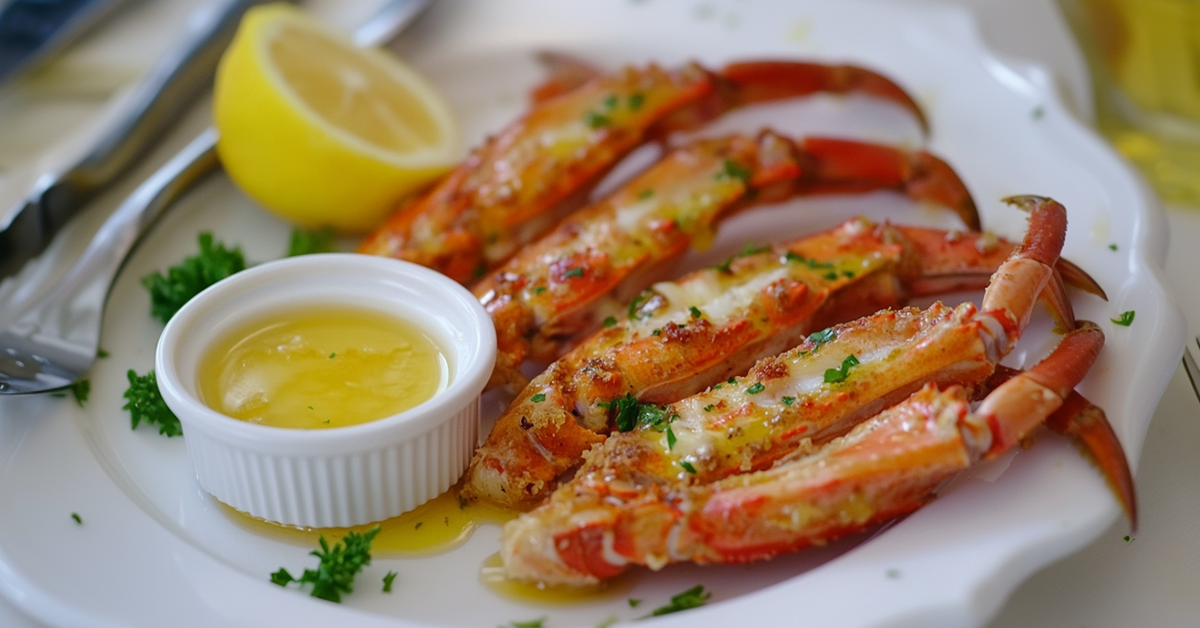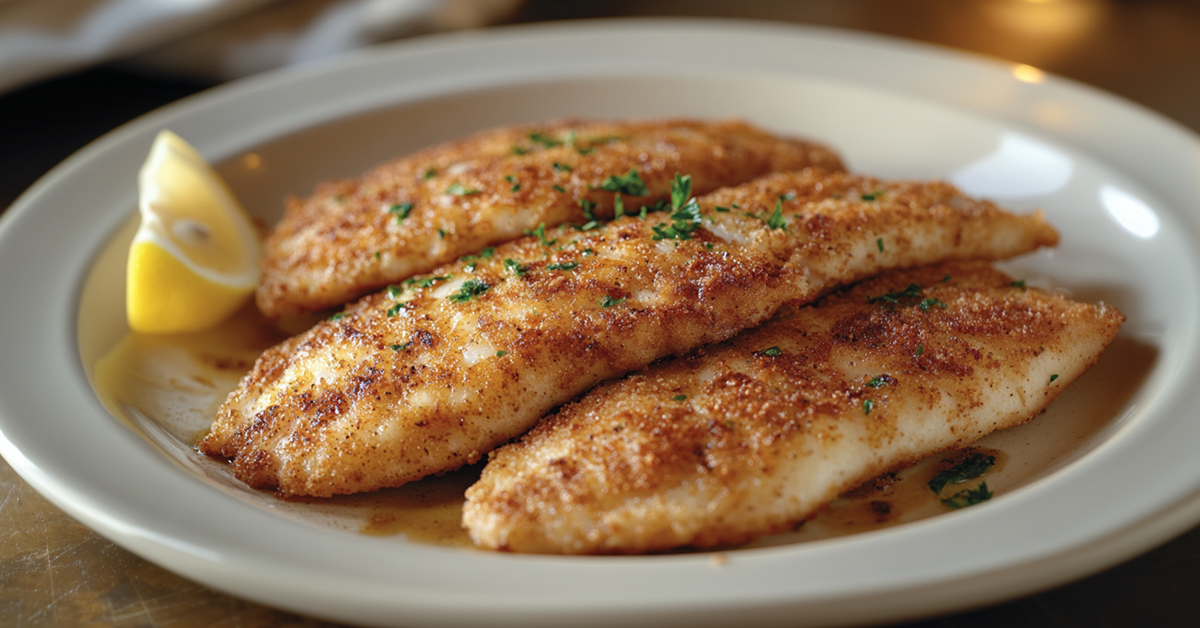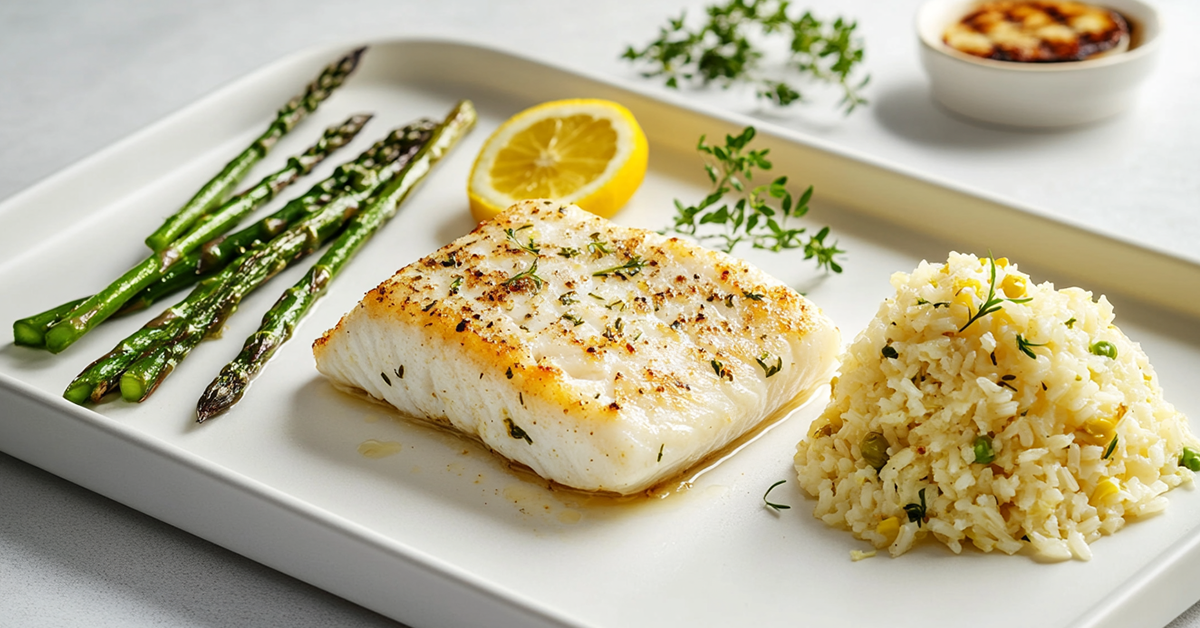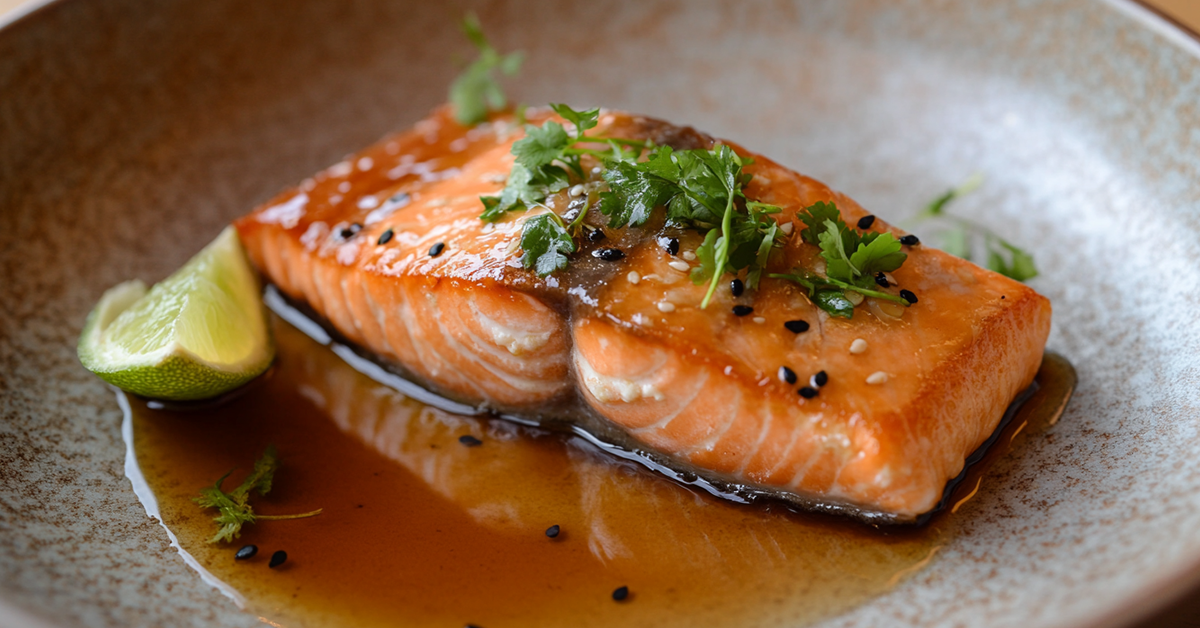In the vibrant tapestry of Indian cuisine, few dishes ignite the senses quite like Apollo Fish. This tantalizing recipe hails from the bustling streets of South India, where aromatic spices and fresh seafood come together in a harmonious dance. Imagine biting into tender, flaky fish enveloped in a spicy marinade that tingles your taste buds and leaves you yearning for more. Whether you’re a seasoned chef or a curious home cook, this delectable dish offers an exciting culinary adventure that’s both simple and satisfying.
As we embark on this flavorful journey, you’ll discover that creating Apollo Fish is not just about following a recipe; it’s about immersing yourself in the rich traditions of Indian cooking. With just four straightforward steps, you can transform everyday ingredients into an extraordinary meal that will impress family and friends alike. So grab your apron and prepare to dive into the world of spices as we unveil how to make delicious Apollo Fish—a dish that’s sure to become a favorite at your dining table!
Table of Contents
What is Apollo Fish?
Apollo Fish is a popular South Indian dish that originated in the coastal regions of Andhra Pradesh and Tamil Nadu. It is primarily made using fish fillets, which are marinated in a blend of spices including red chili powder, turmeric, ginger-garlic paste, and often a dash of lemon juice. The marinated fish is then coated with rice flour or corn flour before being deep-fried until it achieves a crispy texture.
This dish has gained popularity as an appetizer in many restaurants due to its bold flavors and appealing crunch. The combination of spices not only enhances the taste but also makes it an enticing option for those who enjoy spicy food. The rich aroma and vibrant color of Apollo Fish make it visually appealing as well.
The origins of Apollo Fish can be traced back to the culinary practices of South India, where seafood plays a significant role in the local diet due to the proximity to the ocean. This dish reflects the region’s love for spicy cuisine and showcases the use of fresh ingredients that are readily available.
Apollo Fish has garnered a strong fan base not just within India but also among food lovers globally, thanks to its unique flavor profile and satisfying texture. Whether enjoyed at roadside stalls or upscale dining establishments, it continues to be a favorite choice for both locals and tourists seeking authentic South Indian flavors.
Why You’ll Love This Apollo Fish Recipe
This Apollo Fish recipe is a standout dish that perfectly balances ease and flavor, making it a must-try for any home cook. Not only is it quick and easy to prepare, but it also brings the family together around the dinner table or serves as an impressive centerpiece for entertaining guests.
What truly sets this recipe apart is its delightful combination of textures and flavors. The crunchy coating on the fried fish creates a satisfying crunch with every bite, while the bold Indian spices infuse the dish with a vibrant kick that awakens your taste buds. Each piece is meticulously seasoned, ensuring that every mouthful bursts with flavor.
Additionally, this dish caters to diverse palates, making it family-friendly—perfect for picky eaters and adventurous foodies alike. Whether you’re hosting friends for a casual get-together or enjoying a cozy weeknight meal with loved ones, Apollo Fish promises to be a hit that will leave everyone asking for seconds!

Apollo Fish Recipe
- Total Time: 35 minutes
Ingredients
For Marination:
- 500g boneless fish (Apollo fish, basa, or any firm white fish)
- 1 tbsp ginger-garlic paste
- 1 tsp red chili powder
- 1 tsp turmeric powder
- 1 tbsp lemon juice
- 2 tbsp corn flour
- 2 tbsp all-purpose flour (maida)
- Salt to taste
- Water (as needed)
- Oil (for deep frying)
For Stir-Fry:
- 2 tbsp oil
- 1 onion (finely sliced)
- 2–3 green chilies (slit)
- 1 tbsp ginger-garlic paste
- 1 tsp red chili sauce
- 1 tsp soy sauce
- 1 tsp tomato ketchup
- Curry leaves (a handful)
- Fresh coriander leaves (for garnish)
- Salt to taste
Instructions
Step 1: Marinate the Fish
Begin by washing the fish pieces and patting them dry. Cut the fish into medium-sized cubes or strips. In a bowl, combine ginger-garlic paste, red chili powder, turmeric powder, lemon juice, salt, corn flour, and all-purpose flour. Add a little water to create a thick batter. Coat the fish pieces evenly in this batter and let them marinate for 15–20 minutes.
Step 2: Deep Fry the Fish
Heat oil in a deep frying pan or kadai over medium heat. Once hot, carefully add the marinated fish pieces and fry until they are golden brown and crispy. Remove the fried fish from the pan and place them on paper towels to absorb excess oil.
Step 3: Prepare the Stir-Fry
In a separate pan, heat 2 tablespoons of oil over medium heat. Add sliced onions, green chilies, and curry leaves; sauté until the onions turn golden brown. Incorporate ginger-garlic paste and stir until fragrant. Next, add red chili sauce, soy sauce, and tomato ketchup; mix well to combine.
Gently toss in the fried fish, ensuring each piece is coated with the sauce mixture.
Step 4: Garnish and Serve
Check for seasoning and adjust salt if necessary. Garnish with fresh coriander leaves for added flavor and presentation. Serve hot as an appetizer or alongside rice or naan for a delicious meal.
- Prep Time: 20 minutes
- Cook Time: 15 minutes
- Category: Seafood
- Method: Frying
- Cuisine: Indian
The Perfect Pairings: What to Serve with Apollo Fish
Apollo Fish, known for its spicy and flavorful profile, pairs beautifully with a variety of accompaniments that enhance its taste. Here are some popular sides and serving suggestions:
1. Chutneys and Sauces:
– Mint Chutney: The refreshing flavor of mint chutney complements the spice of Apollo Fish perfectly. Its coolness balances out the heat.
– Garlic Sauce: Creamy garlic sauce adds richness and depth, making it a great dip for the fish.
– Tamarind Chutney: The sweet and tangy notes of tamarind chutney provide a delightful contrast to the savory flavors of the fish.
2. Serving Suggestions:
– With Rice: Serve Apollo Fish over a bed of fragrant basmati rice or coconut rice. This combination allows you to soak up any extra spices or sauces.
– With Naan: Warm naan bread is perfect for scooping up pieces of Apollo Fish along with chutneys, creating a delicious hand-held meal.
– As a Party Snack: Cut the Apollo Fish into bite-sized pieces and serve them as party snacks alongside cocktails. Pair them with small bowls of various chutneys for dipping.
These accompaniments elevate the dining experience by providing contrasting flavors and textures, ensuring that your meal featuring Apollo Fish is both satisfying and memorable!
The Secret to Getting Crispy Apollo Fish Every Time
Achieving that perfect crispy texture when cooking Apollo fish involves a few key techniques and tips. Here’s how you can ensure your fish comes out perfectly crispy every time.
Why Marinating is Important
Marinating the Apollo fish before cooking is crucial for enhancing flavor and improving texture. A good marinade typically includes acid (like lemon juice or vinegar), which helps to tenderize the fish while infusing it with flavor. Additionally, marinating allows spices and seasonings to penetrate the fish, giving it a delicious taste that complements the crispy exterior. Aim to marinate for at least 30 minutes, but for even better results, let it sit for a few hours in the refrigerator.
Frying Techniques
- Right Oil Temperature: The temperature of your oil plays a pivotal role in achieving crispiness. Ideally, you want your oil heated to around 350°F to 375°F (175°C to 190°C). This high temperature ensures that the outer layer of the fish cooks quickly, forming a crust while preventing it from absorbing too much oil and becoming soggy. Use a deep-fry thermometer for accuracy.
- Importance of Small Batches: Frying in small batches is essential. Overcrowding the pan can cause the oil temperature to drop significantly, leading to greasy and soggy fish instead of crispy perfection. Cook one or two pieces at a time, allowing enough space between them for proper circulation of hot oil.
- Avoiding Soggy Fish: To prevent sogginess before frying, ensure your fish is patted dry with paper towels after marinating. Excess moisture on the surface can create steam during frying, which compromises crispiness. Additionally, using a light coating of flour or breadcrumbs can help create an extra crunchy texture on the outer layer.
By following these tips—marinating properly, maintaining optimal oil temperature, frying in small batches, and ensuring your fish is dry—you’ll be well on your way to enjoying perfectly crispy Apollo fish every time!
A Quick Glimpse Into South Indian Spices
South Indian cuisine is renowned for its vibrant flavors, which are largely attributed to its unique spices. Among these, chili powder, curry leaves, and ginger-garlic paste stand out for their significant roles in creating depth and richness in various dishes.
Chili Powder: This spice is a staple in South Indian cooking, known for bringing heat and color to the plate. The type of chili used can vary from mild to very spicy, allowing chefs to tailor the heat level of their dishes. Beyond just adding spice, chili powder also contributes a subtle sweetness and complexity that enhances the overall flavor profile.
Curry Leaves: Often used as a tempering agent, curry leaves are aromatic and impart a distinct flavor that is both earthy and slightly citrusy. They add freshness to dishes and are particularly significant in South Indian curries, sambar (a lentil-based vegetable stew), and rasam (a spiced soup). The unique taste of curry leaves elevates the dish’s aroma and makes it more inviting.
Ginger-Garlic Paste: This essential ingredient combines the sharpness of ginger with the pungency of garlic, creating a robust foundation for many South Indian recipes. It adds warmth and depth while also contributing anti-inflammatory properties. When used in marinades or as part of sautéed bases, this paste enhances flavors significantly, making it indispensable in curries and stir-fries.
In summary, the combination of chili powder, curry leaves, and ginger-garlic paste exemplifies the rich tapestry of flavors found in South Indian cuisine. Together, they create an intricate balance that not only defines individual dishes but also showcases the region’s culinary heritage.
[source]
How to Customize Your Apollo Fish Recipe
When it comes to customizing your Apollo fish recipe, the key lies in embracing bold flavors and ingredients that resonate with your taste buds. Start by experimenting with marinades that incorporate citrus for brightness or spices from around the globe to create a unique twist. For instance, try adding za’atar or harissa for a Middle Eastern flair, or infuse traditional Asian notes by marinating in soy sauce paired with ginger and sesame oil. The beauty of this dish is its adaptability; whether you prefer a zesty approach with lime and cilantro or a smoky profile using paprika and cumin, the choice is yours.
Don’t stop at the marinade—think about how sides can elevate the meal. Pair your Apollo fish with an unexpected bed of quinoa mixed with roasted vegetables, drizzled lightly with tahini dressing for creaminess. Alternatively, consider grilled pineapple salsa as a fresh accompaniment; its sweetness complements the savory richness of the fish perfectly while adding texture to every bite. As you explore these dimensions of customization, allow your culinary creativity to flourish—every ingredient has potential when it comes to making this dish distinctly yours!
Pro Tips for Beginners: Avoiding Common Mistakes
When preparing an Apollo fish dish, beginners may encounter a few common pitfalls. Here are some troubleshooting tips to ensure your fish turns out perfectly every time.
1. What to Do if the Fish Turns Out Soggy
If your fish ends up soggy, it could be due to excess moisture or improper frying technique. Here’s how to fix it:
– Drain Excess Moisture: Before frying, make sure to thoroughly pat the fish dry with paper towels. This helps prevent steam from forming during cooking.
– Adjust Frying Temperature: Ensure the oil is hot enough (around 350°F/175°C) before adding the fish. If the oil is not hot enough, the fish will absorb more oil and become soggy.
– Double Frying Technique: If you’re dealing with sogginess after frying, try double frying—fry the fish briefly at a lower temperature first, then remove and let it rest for a few minutes before frying again at a higher temperature until crispy.
2. How to Avoid Overcooking or Undercooking the Fish
Getting the cooking time right can be tricky. To avoid overcooking or undercooking:
– Use a Timer: Keep track of cooking time based on thickness; generally, fry for about 3-4 minutes per side depending on thickness.
– Check Internal Temperature: Use a food thermometer to ensure that the internal temperature reaches 145°F (63°C).
– Visual Cues: The fish should be opaque and flake easily with a fork when done. If it’s still translucent in parts, it needs more time.
3. Tips on Maintaining Flavor and Texture After Frying
To keep your fried Apollo fish flavorful and textured after cooking:
– Avoid Covering Immediately: Once removed from oil, let the fish rest on a wire rack instead of placing it on a plate covered with foil or paper towels which can trap steam and lead to sogginess.
– Serve Immediately: Enjoy your fried fish fresh out of the pan for best taste and texture.
– Accompaniments Matter: Pair with tangy dips like tartar sauce or spicy salsas that complement and enhance the flavors without overpowering them.
By following these pro tips, you can elevate your Apollo fish dish and enjoy perfectly cooked seafood every time!
Can Apollo Fish be Made Ahead?
Apollo Fish, with its vibrant flavors and delicate texture, is a dish that many aspire to master at home. While fresh-cooked varieties shine on the dinner table, making Apollo Fish ahead of time can be an innovative approach for busy weeknights or festive gatherings. When prepared in advance, the fish benefits from marinating longer—enhancing its flavor profile as spices infuse deeply into the fillet.
To reheat without losing quality, consider gently pan-searing or baking the fish rather than using a microwave, which can lead to a loss of that tender flakiness we all crave. Alternatively, you might try serving it cold atop a salad or in tacos; this unexpected twist not only preserves its integrity but also elevates your meal prep game. Pair it with homemade sauces ready to drizzle on just before serving for an impressive finish that belies its make-ahead nature. Embracing this method frees up valuable time while still allowing you to showcase culinary expertise!
A Flavorful History: The Story Behind Apollo Fish
The Apollo Fish, named after the ancient Greek god of music and prophecy, carries a rich narrative that weaves together culture, sustainability, and culinary innovation. Historically found in the pristine waters of the Mediterranean, this fish was once reserved for royalty and nobility due to its delicate flavor and unique texture. As trade evolved through the centuries, so did the accessibility of Apollo Fish; it transitioned from an elite delicacy to a staple in local markets across coastal regions. Chefs began experimenting with diverse cooking techniques that highlighted its nuanced flavor profile—grilling over open flames became particularly popular among fishermen who wished to celebrate their fresh catch.
In recent years, awareness around sustainable fishing practices has turned Apollo Fish into a symbol of environmental consciousness within culinary circles. Fishermen are now utilizing age-old techniques alongside modern strategies aimed at preserving both quality and biodiversity during harvests. This shift not only ensures that generations can continue enjoying this exquisite seafood but also educates consumers about responsible sourcing. Participating in farm-to-table movements further amplifies this narrative by connecting diners directly with those who maintain these traditions—a journey from ocean depths to gourmet plates that honors both history and future sustainability efforts. Each bite ultimately tells a story not just about flavor but also about stewardship—the ongoing relationship between humanity’s appetites and nature’s bounty.
Why This Apollo Fish Recipe is a Must-Try
The Apollo Fish recipe is not just a dish; it’s an experience that tantalizes the taste buds and awakens the senses. Originating from South Indian cuisine, this preparation skillfully balances spice and flavor, elevating the humble fish to exquisite heights. The key lies in the mastery of marination, which involves a vibrant mix of spices including red chili powder, ginger-garlic paste, and tangy yogurt—each ingredient adding depth and richness that transforms ordinary fish into something spectacular.
One of the standout aspects of Apollo Fish is its versatility. Whether grilled, baked, or fried to perfection with a crispy exterior, this recipe opens up endless possibilities for customization. You can enhance it further by incorporating seasonal vegetables or even serving it atop a bed of fragrant coconut rice for an unforgettable meal. With each bite bursting with zest and warmth, your culinary journey through South India comes alive on your plate—making it not only a must-try but also an invitation to share stories of culture and tradition around the dinner table. So gather your friends or family and dive into this vibrant dish that promises to not only satisfy hunger but also create lasting memories.
Read also: Sheepshead Fish Recipe: 4 Simple Steps to a Nice Flavorful Catch

